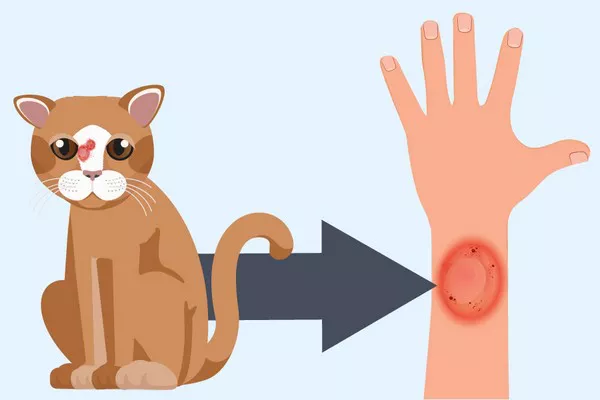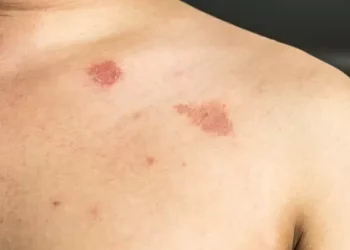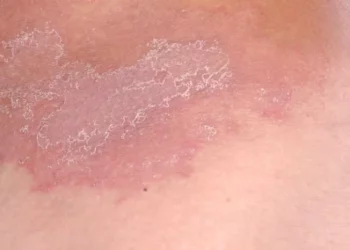Ringworm, despite its name, is not caused by worms but rather a fungal infection that can affect both animals and humans. It is highly contagious and can be transmitted between species, particularly from cats to humans. Understanding how ringworm spreads from cats to humans is crucial for effective prevention and management of this fungal infection.
What is Ringworm?
Ringworm, known scientifically as dermatophytosis, is caused by various fungal species called dermatophytes. These fungi thrive on keratin, a protein found in the outer layer of skin, hair, and nails. The most common dermatophyte species responsible for ringworm in cats and humans are Microsporum canis, Microsporum gypseum, and Trichophyton species.
How Cats Contract Ringworm
Cats can acquire ringworm through exposure to fungal spores in the environment, typically from soil or other infected animals. Ringworm is highly contagious among cats, particularly kittens and those with compromised immune systems. Once a cat becomes infected, the fungus can colonize the skin and hair follicles, leading to characteristic skin lesions and hair loss. Cats can be carriers of ringworm without showing symptoms, further complicating the control of the infection.
Transmission from Cats to Humans
The transmission of ringworm from cats to humans usually occurs through direct contact with infected animals. Fungal spores shed from the cat’s skin and hair can easily transfer to humans through petting, grooming, or handling contaminated objects such as bedding, brushes, or furniture. Additionally, fungal spores can linger in the environment, making it possible to contract ringworm from surfaces that an infected cat has come into contact with.
Risk Factors for Human Infection
Several factors increase the risk of humans contracting ringworm from infected cats:
1. Direct Contact: Regularly handling or grooming an infected cat increases the likelihood of fungal transmission.
2. Immune Status: Individuals with weakened immune systems, such as the elderly, young children, or those with underlying health conditions, are more susceptible to ringworm infection.
3. Duration of Contact: Prolonged exposure to an infected cat or contaminated environment raises the risk of contracting ringworm.
4. Environmental Contamination: Living in close quarters with an infected cat or sharing items with them (e.g., bedding, brushes) can facilitate transmission.
Clinical Presentation in Humans
In humans, ringworm typically appears as red, scaly patches on the skin that may be itchy or inflamed. The affected area often resembles a circular or ring-shaped rash, hence the name “ringworm.” Hair loss can also occur if the scalp is affected. Nail infections (onychomycosis) caused by ringworm fungi can lead to brittle, discolored, or thickened nails.
Preventive Measures
Preventing the spread of ringworm from cats to humans involves several key strategies:
1. Routine Veterinary Care: Regular veterinary check-ups can help identify and treat ringworm infections in cats promptly.
2. Isolation of Infected Cats: Separating infected cats from healthy ones can prevent further transmission within a household or animal shelter.
3. Personal Hygiene: Thorough handwashing after handling cats, especially those with skin lesions, is essential.
4. Environmental Cleaning: Disinfecting surfaces, bedding, and grooming tools regularly can reduce the presence of fungal spores.
5. Education and Awareness: Educating pet owners, particularly those with higher-risk individuals in the household, about the signs and prevention of ringworm can aid in early detection and management.
Diagnosis and Treatment
Both cats and humans require specific diagnostic tests to confirm ringworm infections:
1. Cats: Veterinarians may perform fungal cultures, microscopic examination of hair samples (wood’s lamp test), or PCR (polymerase chain reaction) testing to diagnose ringworm in cats.
2. Humans: Doctors may perform skin scrapings or use a Wood’s lamp to visualize fungal infections on human skin.
Treatment for ringworm in cats often involves topical antifungal medications, such as shampoos or creams, along with systemic antifungal drugs in severe cases. Similarly, human infections are typically treated with oral antifungal medications, topical creams, or shampoos. Prompt treatment is crucial to prevent the spread of infection and alleviate symptoms.
Conclusion
Ringworm is a common fungal infection that can spread from cats to humans through direct contact or exposure to contaminated environments. Understanding the risk factors, clinical presentation, and preventive measures is essential for managing and preventing ringworm infections in both cats and humans. By implementing proper hygiene practices and seeking timely veterinary or medical care, the spread of ringworm can be minimized, ensuring the health and well-being of both pets and their human companions.
Related Topics:
























